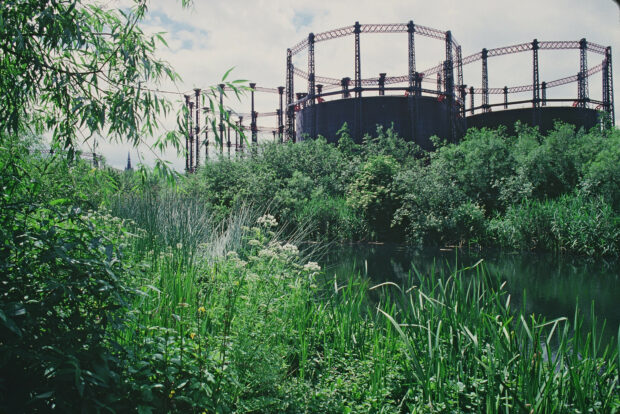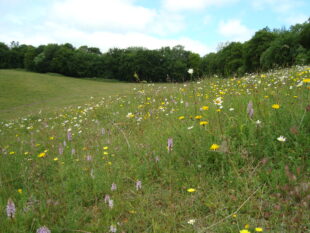
The Secretary of State has now launched an 8-week consultation on the Biodiversity Metric to be used for the purpose of calculating biodiversity net gain as required under the 2021 Environment Act[1]. The Biodiversity Metric is a key tool that supports the delivery of Biodiversity Net Gain (BNG). It is used to calculate the baseline biodiversity value of a site and forecast its future biodiversity value. The launch of this consultation is a key milestone in the countdown towards the commencement of mandatory BNG for Town and Country Planning Act developments in November 2023. The same requirement will come into force for developments under the 2008 Planning Act by the end of 2025.
Natural England has played a critical role in the development of the metric which was first launched by Defra in 2012 and was partly based upon work undertaken by Bill Butcher and Jo Treweek. Since then, Natural England has worked with others within Government and with external stakeholders and partners, to further develop and refine the Metric. In 2019 we launched version 2.0 of the metric, followed two years later by version 3.0. In April we released Biodiversity Metric version 3.1 and subsequently recommended to Defra that it become the metric to be used to underpin mandatory biodiversity net gain. Alongside the release of Biodiversity Metric 3.1 we released a streamlined version of the metric developed for use on small development sites, called the Small Sites Metric. These two metrics are now being formally consulted on ahead of the publication of, what will become, the Secretary of State’s officially sanctioned biodiversity metric(s) to be used for mandatory BNG.

We are expecting that the final version of these two metrics, the full Secretary of State metric and the Small Sites Metric, will be published later this year. The intention is that these two metrics will then remain stable and unchanged for a period of between 3 and 5 years. This will provide certainty and consistency for all metric users. However, any metric needs to evolve and develop over time in response to new knowledge, science and technology. This will be the case with the Biodiversity Metric. Natural England will continue to work behind the scenes, together with Defra group colleagues, metric users and other interested parties, on future metric updates and developments. Based on this work, users experience of the metric and our own evaluation of its impact and performance, we will make periodic recommendations to the Secretary of State about ways the metric could be further developed or improved. This could include the values and multipliers within the metric, the scope and content of the metric and the platform on which it is based. Any substantive change to the metric will be subject to additional consultations before adoption. In short, this is the start of the metric journey, not its end.

However, it is important to remember that, just as BNG is more than just a number, so the metric is just one tool and component of BNG. Work on other elements of the BNG system continues apace. This includes finalising the Biodiversity Gain Plan, the build and testing of the net gain register and credit sales platform (if you would like to help us test these, please register your interest here), the establishment of the monitoring, reporting and enforcement elements of BNG and the production and dissemination of guidance. Incidentally, for a useful primer on BNG please see our previously published BNG Brochure.
November 2023, the start of mandatory BNG, is fast approaching. There is still work to do. However, the publication of this consultation on the Biodiversity Metric that will underpin and inform all calculations for mandatory BNG is an important milestone. Please do share your thoughts and views and continue to help shape the future of BNG.
7 comments
Comment by Louise Bentley posted on
I'm concerned that the metrics do not view buildings as habitat. Therefore building dependent species such as Swifts and House Martins are not catered for. These species are Red Listed in significant decline and we are losing them from our towns and villages. There must be an incentive for developers to incorporate Swift Bricks and House Martin bowls. The Schwegler lightweight 1A brick actually attracts not only Swifts but House Martins can nest inside. This happened on Duchy of Cornwall estate. Buildings are crucial for Bats and Bees and other species of birds such as Swallows and Barn Owls. They seem to have been forgotten like the Swifts and Martins by BNG this is a huge oversight and will hasten their declines.
Comment by Dr Nick White posted on
The biodiversity metric focusses on habitat features e.g. grasslands, woodlands, scrub etc as these features are critical to ensuring that there is a sufficient food supply for swifts, barn owls and other species to forage and feed on. Providing swift bricks or owl boxes etc can also play a key role in providing nesting or roosting opportunities for species but without the supporting habitats in situ or nearby it is unlikely the species will thrive as their food and foraging needs will not be met.
We do still strongly encourage the provision of such features into built structures but we believe that including them in design codes is a more appropriate mechanism to do this. There is already reference to bat and bird boxes in the guidance supporting the National Model Design Code. We also support their incorporation into local design codes.
Comment by Louise Bentley posted on
Thank you for your response, it is much appreciated. I am aware that the guidance for design codes does refer to bird bricks, which is very welcome but will take several years to take effect. With Swift numbers declining by around 5% per year this will be too late. Swifts can travel hundreds of miles each day to forage so local habitat is less critical for them. Biodiversity Net Gain is often being seen as sufficient in itself, with many local authorities apparently unaware that additional measures are required for a healthy balanced and mature ecosystem. I wondered if a separate requirement for ecological enhancement, which many environmental assessments such as BREEAM require, alongside Biodiversity Net Gain could be an effective way to achieve such an ecosystem?
Comment by tom Godfrey posted on
very interesting - how do I sign up for Natural England blogs? Apologies for admin nature of this comment
thank you
Comment by nickmann posted on
Hi, you can sign up via this link
Comment by Serena Read posted on
Would be useful to have a simplified "plain English" format explaining these biometrics and the Biodiversity Net Gain metrics system and process etc?
Comment by Ewan Nugent posted on
Hi, seems a bit odd that in terms of biodiversity credits under biodiversity metric 3.1 that other coniferous forest scores <> the same as upland mixed ashwood, lowland mixed decidious woodland and upland oakwood and scores significantly more than wood pasture. Just wondering what the rational for that is given the generally acknowledged higher biodiversity value of native woodlands ?